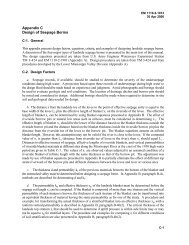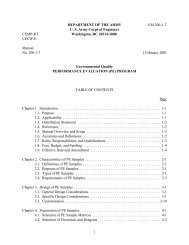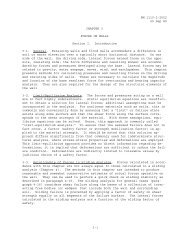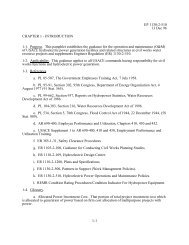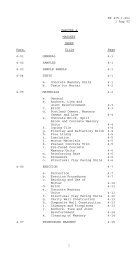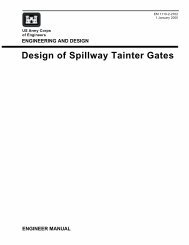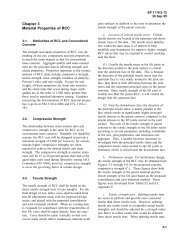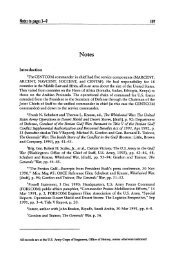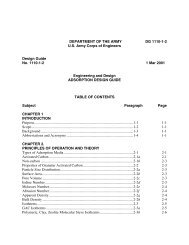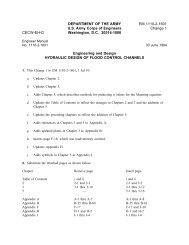Chapter 5 - Publications, US Army Corps of Engineers
Chapter 5 - Publications, US Army Corps of Engineers
Chapter 5 - Publications, US Army Corps of Engineers
You also want an ePaper? Increase the reach of your titles
YUMPU automatically turns print PDFs into web optimized ePapers that Google loves.
EM 1110-2-1701<br />
31 Dec 1985<br />
(7) For a pure run-<strong>of</strong>-river project, the rated head is usually<br />
defined by the maximum plant discharge (hydraulic capacity). For<br />
example, a flow-duration curve would be examined, and one or more<br />
discharges would be selected for detailed study. For each<br />
alternative, the net streamflow available for power generation would<br />
be determined, and this would define the hydraulic capacity for that<br />
plant size. The net head available at the streamflow upon which the<br />
hydraulic capacity is based would be the rated head. The design head<br />
for this type <strong>of</strong> project would typically be based on the midpoint <strong>of</strong><br />
the head range where the plant is generating power, and this would<br />
usually be higher than the rated head (see Figure 5-19).<br />
(8) For projects with seasonal storage, it is usually desirable<br />
to obtain rated output over a range <strong>of</strong> heads. Hence, the rated head<br />
would typically be lower than the design head (the average head). For<br />
preliminary studies, a rated head equal to or slightly below (95<br />
percent <strong>of</strong>) the estimated average head can usually be assumed. For<br />
more advanced studies, the rated head should be defined more specifi-<br />
1 2 3 45 6<br />
DISCHARGE-1OOO CFS<br />
Figure 5-7. Capacity vs. discharge for run-<strong>of</strong>-river<br />
project for alternative plant sizes<br />
5-16




